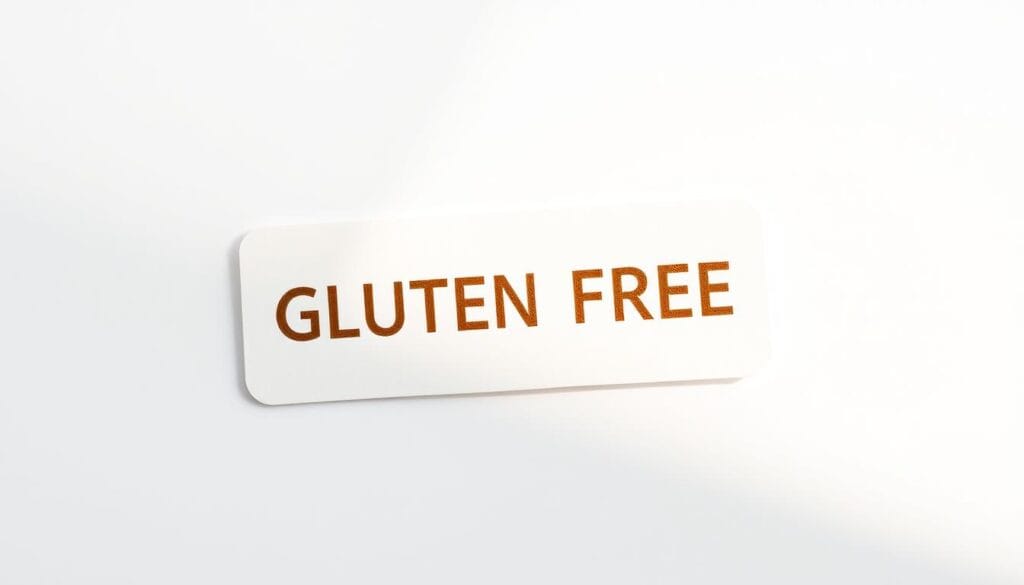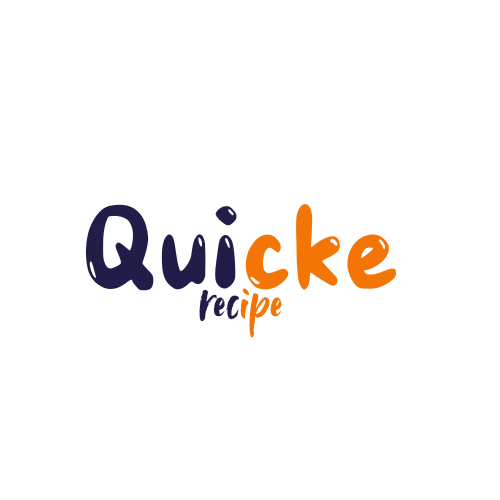Have you ever wondered if popcorn is gluten-free? It’s not that simple. Popcorn itself is gluten-free, but it can get contaminated with gluten in factories that also handle gluten products. This is a big deal for people with gluten sensitivity or celiac disease who need gluten-free popcorn.
It’s important to know if popcorn without gluten is safe for you. In this guide, we’ll dive into gluten-free popcorn. We’ll talk about cross-contamination risks, the need to check labels, and how to make gluten-free popcorn at home. Whether you like plain or flavored popcorn, we’ve got you covered.
Key Takeaways
- Popcorn is naturally gluten-free, but may be at risk of cross-contamination in facilities that process gluten-containing products.
- Gluten free popcorn is a great option for individuals with gluten sensitivity or celiac disease.
- Checking ingredient labels is crucial to ensure that your popcorn without gluten is safe for consumption.
- Making your own popcorn at home allows for total control over ingredients and ensures it remains gluten-free.
- Approximately 13% of the world’s population is sensitive to gluten, making gluten free popcorn a vital option.
- Third-party certifications on packaging can guarantee gluten testing and provide peace of mind for consumers.
- Popcorn can be a healthy snack option, with plain, air-popped popcorn being low in calories and high in fiber.
Understanding Popcorn’s Basic Composition
Ever wondered what makes popcorn so tasty? It’s quite simple. Popcorn is made from corn kernels, which are naturally gluten-free. A 3-cup serving of air-popped popcorn has 93 calories, 1.1g of fat, and 18.6g of carbs.
The corn kernels used for popcorn are called zea mays everta. They have a hard outer shell and a soft inner starch. When heated, the water inside turns to steam, building pressure until the kernel explodes into fluffy popcorn. Plain popcorn is also a good source of dietary fiber, with 3.6g per 3-cup serving.
- Calories: 93 per 3-cup serving
- Carbohydrates: 18.6g per 3-cup serving
- Fiber: 3.6g per 3-cup serving
- Protein: 3g per 3-cup serving
Knowing about popcorn’s composition and nutritional profile helps you choose better snacks. Air-popped popcorn is low in calories and high in fiber, making it a healthy snack option.
The Truth About Popcorn and Gluten Content
Many people wonder if popcorn and gluten are related. The answer is no, popcorn is naturally gluten-free because it’s made from corn. But, there’s a chance of gluten getting into it during processing. So, it’s important to check labels for gluten-free popcorn.
Brands like Orville Redenbacher’s and Angie’s BOOMCHICKAPOP have gluten-free popcorn. But, not all their flavors are gluten-free. Some might have gluten-containing additives. Always read labels and look for certifications to get gluten-free popcorn.
- Check the ingredient list for any gluten-containing ingredients
- Look for certifications from organizations like the Gluten-Free Certification Organization
- Choose plain, air-popped popcorn or certified gluten-free popcorn options
By being careful about gluten content in popcorn, you can enjoy it without gluten worries. Just make sure to pick gluten-free popcorn options.
How Popcorn Fits Into a Gluten-Free Diet
Thinking about adding popcorn to your gluten-free diet? It’s a great choice. Popcorn is made from corn, a whole grain that’s naturally gluten-free. This makes it perfect for those with celiac disease or gluten sensitivity. About 13% of the world’s population can’t eat gluten, so gluten-free snacks like popcorn are key.
There are many ways to enjoy popcorn in a gluten-free diet. You can snack on it alone or use it in other gluten-free recipes. Try seasoning it with gluten-free spices or topping salads with it.
Benefits for Celiac Patients
Celiac patients will find popcorn a great addition to their diet. It’s gluten-free and packed with fiber for better digestion. Plus, it’s low in calories and fat, making it a healthy snack choice.
Advantages for Gluten-Sensitive Individuals
Gluten-sensitive folks will love popcorn too. It’s easy to flavor with gluten-free spices, offering a tasty snack. Plus, popcorn is easy to make at home, making it a convenient option.
Nutritional Benefits of Gluten-Free Popcorn
Gluten-free popcorn is a nutritious snack. It’s full of fiber, low in calories, and rich in antioxidants. As a whole grain, it’s also a good source of vitamins and minerals. Adding gluten-free popcorn to your diet means you get a tasty, healthy snack that’s also gluten-free.
Potential Cross-Contamination Risks
When you eat gluten-free popcorn, think about the risks of cross-contamination. This happens when popcorn is made in places that also handle gluten. To avoid this, choose popcorn that’s certified gluten-free and has less than 20 parts per million (ppm) of gluten.
Things like shared equipment and storage can lead to cross-contamination. Even if the popcorn is naturally gluten-free, there’s still a risk. This is because facilities that handle both gluten-free and gluten products can transfer gluten particles.
To lower cross-contamination risks, pick certified gluten-free popcorn. These brands follow strict rules and tests to ensure their products are safe. Look for brands like Propercorn, Tyrrells Proper Popcorn, and Metcalfe’s. Always check the label for certification and choose brands that focus on gluten-free processing.
Knowing about cross-contamination risks helps you enjoy gluten-free popcorn safely. Whether you’re gluten-sensitive or just like the taste, there are many safe options. Always choose certified gluten-free products and support brands that care about gluten-free handling.
Commercial Popcorn Products and Gluten Safety
Ensuring gluten safety in commercial popcorn is key. Many products may have gluten due to cross-contamination. It’s vital to know the risks and choose gluten-free options.
Movie theater popcorn might have gluten because of shared equipment. But, many microwave and pre-popped popcorns now offer gluten-free choices. Look for certifications from the Gluten-Free Certification Organization (GFCO) or the Celiac Support Association (CSA) to be sure.
Here are some tips for finding gluten-free commercial popcorn:
- Check the ingredient label for gluten-containing ingredients
- Look for certification from organizations such as GFCO or CSA
- Choose popcorn products that are specifically labeled as gluten-free
By following these steps, you can enjoy popcorn while staying safe from gluten. Always choose foods that support your health and well-being.
In conclusion, popcorn can be a tasty and easy snack, but gluten safety is crucial. Being mindful of gluten risks and opting for gluten-free options lets you enjoy your favorite snack safely.
| Popcorn Product | Gluten-Free Option |
|---|---|
| Movie Theater Popcorn | Some theaters offer gluten-free options |
| Microwave Popcorn Brands | Many brands offer gluten-free options |
| Pre-Popped Varieties | Many pre-popped varieties are gluten-free |
Reading Labels: Hidden Sources of Gluten in Popcorn Products
When you’re looking for popcorn, make sure to read labels well. The Canadian Food Inspection Agency found that some corn flour has more than 20 ppm of gluten. This is not safe for people with celiac disease. Always look for certification labels from trusted groups to know your popcorn is gluten-free.
Some gluten-containing additives to watch out for are:
- Modified cornstarch
- Maltodextrin
- Dextrin
These can come from gluten grains, so they might have gluten in popcorn.
It’s important to know what certification labels mean. Look for labels that say the product is gluten-free. Also, check the ingredients for any gluten sources. By reading labels carefully and knowing about hidden sources of gluten, you can enjoy popcorn while staying gluten-free.

Making Your Own Gluten-Free Popcorn at Home
Making gluten-free popcorn at home is a smart choice. It ensures the popcorn is free from gluten. You’ll need 1/2 cup of popcorn kernels for one bag. Use a brown paper lunch bag or a microwave-safe bowl to pop them.
To make homemade popcorn, you can use a microwave or a pot on the stovetop. Microwaving takes about 2 minutes, but it depends on your microwave’s power. Stop it when the popping slows down to 2 to 3 seconds between pops to avoid burning. For gluten-free recipes, add 1/2 teaspoon of oil for every 1/2 cup of kernels. Start with 1 teaspoon of oil for every cup of kernels.
Here are some benefits of making gluten-free popcorn at home:
- Control over ingredients
- Customizable flavors
- Cost-effective
- Freshness guaranteed
By following these simple steps and using the right ingredients, you can enjoy delicious and healthy homemade popcorn that is gluten-free. With a little practice, you can become a pro at making your own gluten-free popcorn at home and enjoy it as a tasty snack.
Best Practices for Storing Gluten-Free Popcorn
Storing gluten-free popcorn right is key to keeping it fresh and safe. It’s important to keep it in a cool, dry spot. This stops moisture and heat from making it go bad too fast. You can keep unpopped kernels for up to 2 years in a sealed container. But, popped popcorn is best eaten within a few days for the best taste.
Here are some tips to keep your gluten-free popcorn fresh:
- Use resealable bags or vacuum-sealed containers to prevent air and moisture from entering.
- Keep the containers in a cool, dry place, away from direct sunlight and heat sources.
- Once opened, reseal the container promptly to maintain freshness.
By following these tips, you can enjoy your gluten-free popcorn for longer. Always check the popcorn for signs of going bad. Look for a stale taste, chewy texture, and lack of crunch. Good popcorn should be light and airy when popped. It’s a tasty and healthy snack choice.
Safe Seasonings and Toppings for Gluten-Free Popcorn
Choosing the right seasonings and toppings for gluten-free popcorn is key. You want flavors that are safe and gluten-free. Luckily, many gluten-free toppings and seasonings are available. Nutritional yeast, herbs, and spices are great options. They add flavor without compromising your diet.
Looking for gluten-free popcorn toppings? Many brands offer certified gluten-free seasonings. Others might need closer label-reading. Always choose certified gluten-free products and read labels carefully. This way, you can enjoy your gluten-free popcorn safely.

- Nutritional yeast
- Herbs and spices
- Coconut oil and dark chocolate
- Turmeric and other spices
These toppings make gluten-free popcorn tasty and nutritious. By picking safe seasonings and toppings, you can enjoy your popcorn worry-free.
Common Mistakes to Avoid When Choosing Popcorn Products
When picking popcorn products, watch out for common mistakes that can ruin their gluten-free status. The biggest worry is the manufacturing process. It can add gluten to the product. This happens when gluten-containing ingredients are made in the same place, showing how crucial manufacturing process concerns are.
Another big issue is cross-contact risks. These happen when popcorn touches gluten during processing, packaging, or storage. To dodge these problems, go for products from trusted makers. They should follow strict gluten-free rules and share their making process openly.
Here are some important things to think about when picking popcorn:
- Choose products with clear gluten-free labels and certifications.
- Look at the ingredient list for gluten-containing additives.
- Learn about the manufacturer’s making process and facilities to check for manufacturing process concerns.
- Be careful of cross-contact risks and pick products with good quality control.
By knowing these common mistakes and avoiding them, you can enjoy popcorn while sticking to a gluten-free diet. Always put your health first by picking reliable brands and checking the products you eat.
Health Benefits of Choosing Gluten-Free Popcorn
Snacking should be both tasty and healthy. Gluten-free popcorn fits the bill, offering many nutritional perks. A three-cup serving of air-popped popcorn has about 3.6 grams of dietary fiber. This makes it a solid source of whole grain fiber.
Gluten-free popcorn is low in calories and packed with antioxidants. It’s also a good source of vitamins and minerals. Plus, it’s safe for those with celiac disease or gluten sensitivity. The fiber in popcorn helps with digestion and supports gut health.
Some key benefits of gluten-free popcorn include:
- Rich in antioxidants, particularly polyphenols, which may help protect against certain diseases
- Low in calories, making it a suitable snack option for weight management
- Good source of fiber, promoting digestive health and supporting beneficial gut bacteria
- Gluten-free, making it safe for individuals with celiac disease or gluten sensitivity
Choosing gluten-free popcorn as a snack offers many health benefits. It supports digestive health and helps with weight management. With its antioxidant-rich profile and low calorie count, it’s a healthy and tasty choice.
Top Brands Offering Gluten-Free Popcorn Options
Many top brands offer gluten-free popcorn options. They make sure their products are safe for those with gluten intolerance or sensitivity. This is very important.
Brands like Orville Redenbacher’s, ACT II, and Angie’s BOOMCHICKAPOP are leaders in this area. They have a wide range of flavors that are all gluten-free. This makes it easy to find a popcorn that you’ll love.
Premium Options
If you’re looking for something special, SkinnyPop and Popcornopolis are great choices. They offer high-quality, gluten-free popcorn. These brands use the best ingredients and are very careful about gluten-free safety.
Budget-Friendly Options
Even if you’re watching your budget, there are still great gluten-free popcorn options out there. Kirkland Signature and 365 Whole Foods Market have affordable, gluten-free popcorn. They taste just as good as the more expensive brands.
Here are some popular gluten-free popcorn brands and their products:
- Orville Redenbacher’s: microwave popcorn products
- ACT II: microwave popcorn products
- Angie’s BOOMCHICKAPOP: certified gluten-free popped popcorn
- SkinnyPop: certified gluten-free popcorn products
- Popcornopolis: gourmet gluten-free popcorn
Conclusion
Gluten-free popcorn is a great snack for those with gluten sensitivities or celiac disease. It’s safe because popcorn naturally doesn’t have gluten. Plus, choosing certified gluten-free products ensures you can enjoy it worry-free.
There are many gluten-free popcorn brands out there. You can pick from microwave popcorn or make your own. Just make sure to check labels and look for certifications to ensure it’s gluten-free.
Popcorn is not just tasty; it’s also good for you. It’s full of fiber, complex carbs, and other nutrients. Adding gluten-free popcorn to your diet can be a tasty way to boost your health.
FAQ
Is popcorn naturally gluten-free?
What are the risks of cross-contamination with popcorn?
How can I ensure I’m buying gluten-free popcorn?
How does popcorn fit into a gluten-free diet?
Can I make my own gluten-free popcorn at home?
What are some common mistakes to avoid when choosing popcorn products?
What are the health benefits of choosing gluten-free popcorn?
Table of Contents
Did you like this recipe?
There are no reviews yet. Be the first one to write one.

